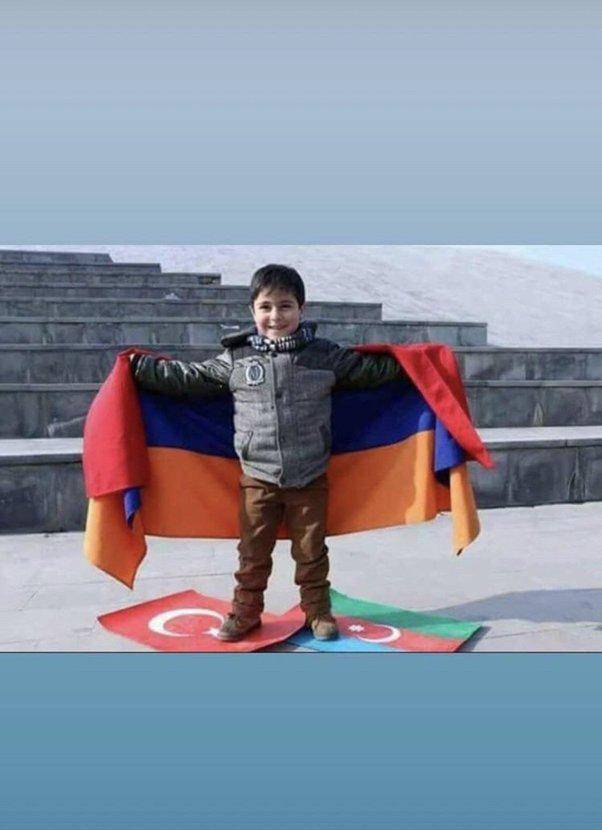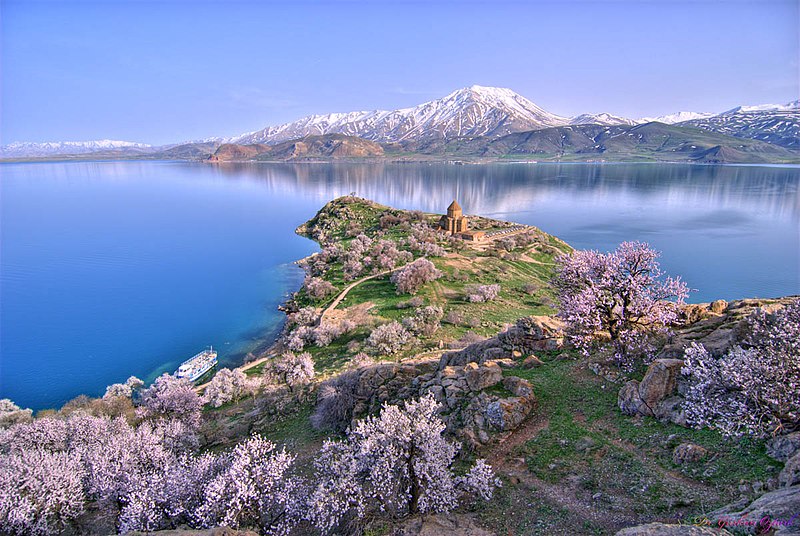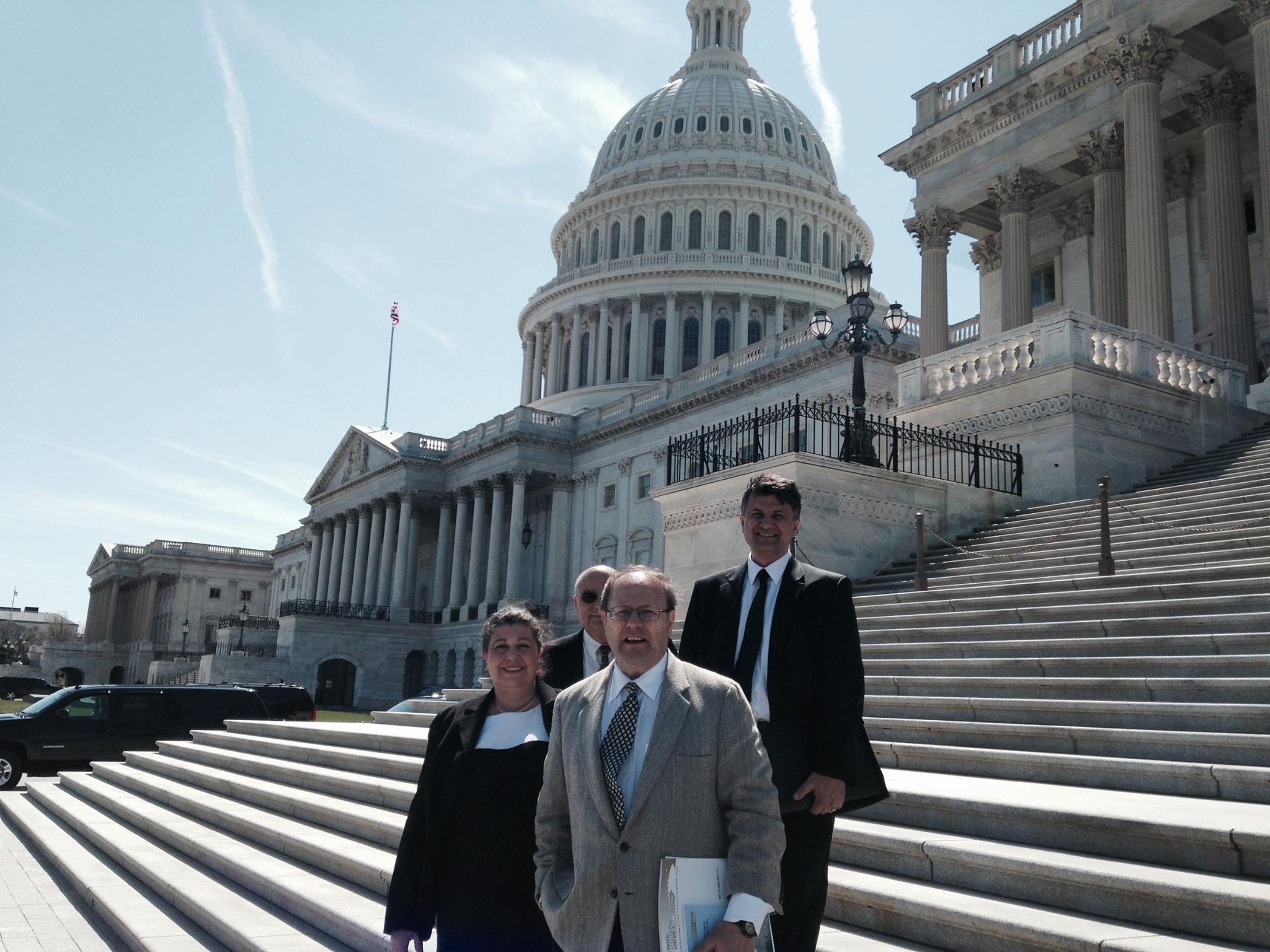This file contains history and arguments about Cyprus İsland.

Download

By Hj Pravitz, Nya Dagligt Allehanda, 23 April, 1917
Hj Pravitz takes a deeper look at the statements that had previously been made by Mrs. Marika Stjernstedt, in Nya Dagligt Allehanda, a Swedish Newspaper published in the period 1859-1944.
By Hj Pravitz, Nya Dagligt Allehanda, 23 April, 1917
Hj Pravitz takes a deeper look at the statements that had previously been made by Mrs. Marika Stjernstedt, in Nya Dagligt Allehanda, a Swedish Newspaper published in the period 1859-1944.
*******************
“Recently returned home from abroad I have right now – i.e. somewhat late – had the opportunity to look at two Swedish booklets on the Armenian issue. “Sven Hedin – adelsman” [Sven Hedin a nobility], by Ossiannilsson and “Armeniernas fruktansvärda läge” [the terrible situation of the Armenians], by Marika Stjernstedt. The former book went immediately in the waste basket. In all its poorly hidden appreciation of the title character, it annoyed me more than a main article in Dagens Nyheter. The latter, which seemed spirited by the compassion for the suffering Armenians, I have read repeatedly, and it is really this and its inaccuracies that my article is about.
I dare to claim, that hardly any other Swede has had the opportunity like me, to thoroughly and closely study the misery among the Armenians, since I now for about a month have traveled right among all the emigrating poor people. And this, during the right time, fall 1915, during which the alleged brutalities, according to both writers, were particularly bad.
I want to hope, that what I am describing below, which are my own experiences, will have the purpose to remove the impression of inhumanity and barbarity from the Turkish and German side, which is easily induced by the reading of the two booklets mentioned above.
If I understand the contents of the books correctly, both writers want to burden the Turks as well as the Germans with deliberate assaults or even cruelties.
My position as an imbedded eyewitness gives me the right and duty to protest against such claims, and the following, based on my experiences, will support and strengthen this protest.
Despite the fact that I was and am such a pronounced friend of Germany and its allies, which is consistent with the position of a servant of a neutral country, I started my journey from Konstantinopel (Istanbul) through the Asian Turkey, with a certain prejudiced point of view, partly received from American travelers, about the persecution of the Armenians by their Turkish masters. My Lord, which misery I would see, and to which cruelties I would be a witness! And although my long service in the Orient has not convinced me that the Armenians, despite their Christianity, are any of God’s best children, I decided to keep my eyes open to see for myself to which extent the rumors about Turkish assaults are true and the nameless victims were telling the truth.
I sure got to view misery, but planned cruelties? Absolutely nothing.
This is precisely why it has appeared to me to be necessary to speak up.
To start with, it is unavoidable to state, that a transfer of the unreliable Armenian elements from the northern parts of the Ottoman Empire to the south was done by the Turkish government due to compulsory reasons.
It should have been particularly important to remove, from the Erzeroum district, all these settlers, who only waited for a Russian invasion to join the invading army against the hated local legal authority. When Erzeroum fell in February 1916, an Armenian, with whom I just shared Russian imprisonment, uttered something I interpreted as ‘It would have fallen way earlier if we had been allowed to stay.’ That a country like Turkey, threatened and attacked by powerful external enemies, is trying to secure itself against cunning internal enemies, no one should be able to blame her.
I think it points to a misconception when one claims that the Armenians are living under the uninterrupted distress of some sort of Turkish slavery. There are peoples that have it worse. Or what about Indian Kulis and Bengalis under British rule, and the Persian nationalists in Azerbaijan under the Russians’ – “penetration pacificue”, and the Negroes in Belgian Congo, and the Indians in the Kautschuk district in French Guyana. All these, not to mention many others, seem to me, are victimized to a higher degree and more permanently than the Armenians. I guess technically, one can say that a longer lasting but milder persecution is less bearable to endure than a bloody but quick act of despotism, as in (Ottoman) assaults of the kind that from time to time put Europe’s attention on the Armenian issue. Apart from these periodical so-called massacres, the reason of which could to a large degree be ascribed to the Armenians themselves, I do think that the (Armenians) are treated reasonably well.
The (Armenians) have their own religion, their own language, both in speaking and writing, their own schools etc.
As far as the much discussed major Armenian migration is concerned, I am the first to agree that the attempts of the Turkish side to reduce the difficulties of the refugees left a lot to be desired. But I emphasize again, in the name of fairness, that considering the difficult situation in which Turkey, as the target of attack from three powerful enemies, was in and it was, in my opinion, almost impossible for the Turks, under these circumstances, to have been able to keep up an orderly assistance activity.
I have seen these poor refugees, or “emigrants”, to use Tanin’s words, seen them closely. I have seen them in the trains in Anatolia, in oxen wagons in Konia and elsewhere, by foot in uncountable numbers up in the Taurus mountains, in camps in Tarsus and Adana, in Aleppo, in Deir-el-Zor and Ana.
I have seen dying and dead along the roads – but among hundreds of thousands there must, of course, occur casualties. I have seen childrens’ corpses, shredded to pieces by jackals, and pitiful individuals stretch their bony arms with piercing screams of “ekmek” (bread).
But I have never seen direct Turkish assaults against the ones hit by destiny. A single time I saw a Turkish gendarme in passing hit a couple of slow moving people with his whip; but similar things have happened to me in Russia, without me complaining, not then, nor later.
In Konia, there lived a French woman, Madame Soulie, with family and an Italian maid. They lived there, despite the war, and the Turks did them no harm. And as far as the Germans stationed in the town are concerned, she called them ‘our angels.’ ‘They give all they have to the Armenians!.’ Such evidence of German readiness to sacrifice I established everywhere the Germans were.
In Aleppo, I lived by the Armenian Baron, the owner of a large hotel. He did not tell me about any Turkish cruelties, although we talked a lot about the situation of his fellow citizens. We also talked about Djemal Pasha, who would come the day after and with whom I would meet. Baron expressed himself very positively about this man, who by the way, least of all seemed like an executioner.
In Aleppo, I hired an Armenian servant, who then during a couple of months was my daily company. Not a word has he told me about Turkish cruelties, neither in Aleppo nor in his home town of Marash or elsewhere. I must unconditionally believe in exaggerations from Mrs. Stjernstedt’s side and I do not put one bit of confidence in the Armenian authorities she claims to refer to.
On page 44, Mrs. Stjernstedt writes about (the town of) Meskene and an Armenian doctor Turoyan. I was in Meskene right when he was supposed to have been there. I looked carefully around everywhere for historical landmarks, since Alexander the great crossed the Euphrates (river) here, and the old testament also talks about this place. There was not a sign of Armenian graves and not of any Armenians either, except for my just mentioned servant. I consider Mr. Turayan’s evidence very questionable, and I even dare to doubt that this man, if he exists, was ever there during the mentioned time. If the conditions in Meskene really were as he claims, will anyone then believe that the suspicious Turks would have sent an Armenian up there with a “mission from the government”?
For fourteen days, I followed the Euphrates; it is completely out of the question that I during this time would not have seen at least some of the Armenian corpses that, according to Mrs. Stjernstedt’s statements, should have drifted along the river en masse at that time. A travel companion of mine, Dr. Schacht, was also travelling along the river. He also had nothing to tell when we later met in Baghdad.
In summary, I think that Mrs. Stjernstedt, somewhat uncritically, has accepted the hair-raising stories from more or less biased sources, which formed the basis for her lecture.
By this, I do not want to deny the bad situation for the Armenians, which probably can motivate the collection initialized by Mrs. Stjernstedt.
But I do want to, as far as it can be considered to be within the powers of an eyewitness, deny that the regular Turkish gendarme forces, who supervised the transports, are guilty of any cruelties.
Later on, in a different format, I want to impartially and neutrally like now treat the Armenian issue, but at the moment, may the adduced be enough.
Rättvik, April 1917
HJ Pravitz.


Liana Yeghiazaryan
“Radiolur”
06.09.2010 17:06
A number of Armenian intellectuals from the History Institute of the
Armenian National Academy of sciences have issued a statement today,
according to which Turkey will demand an expensive reimbursement from
the Armenian side in exchange for the conduct of the liturgy at the
St. Cross Church of Akhtamar. Director of the History Institute Ashot
Melkonyan is confident that there only one way out of this slippery
situation – we should not support the Turkish show by visiting Akhtamar
on that day.
The Turkish side is trying to present the demonstration of the cross
to the public and the conduct of the liturgy at St. Cross Church as
an expression of goodwill towards Armenia and the Armenian people. The
Turkish side also wishes to involve 5-6 thousand people in the event.
Rumors say the Armenian-Turkish border is going to be opened for
three days. Armenian historians are assured, however, that Turkish
thus wants to reach certain objectives, which are anti-Armenian.
“We have no desire to participate in the recurrent Turkish show. This
is true mockery. It would take half an hour to install the cross
on the dome. I think there can be no second opinion here,” said
Ashot Melkonyan, adding that “we are the masters of our Akhtamar
and we will have a lot of opportunists to conduct liturgies there,
and we should not do it under the Turkish flag waving and the face
of Mustafa Kemal there.”
Director of the Oriental Studies Institute Ruben Safrastyan says the
show organized by Turkey is a simple deceit. According to him, the
decision of the Mother See of Holy Etchmiadzin to boycott the mass
at St. Cross has made many citizens refuse from the idea of leaving
for Van.
“I think the majority of Armenians say ‘no’ to this show. We should
understand that the Shariat prohibits renovating a Christian Church
and installing a cross on it. Besides, the political situation in
Turkey should be taken account of. 75% of the Turkish citizens are
active Muslims, and the government will not go against them. Actually,
they are deceiving,” he said.
Armenian historians are confident that e Tukrey is doung that step
to resist the anti-Turkish wave expected to raise on the occasion
of the 100th anniversary of the Armenian Genocide. According to the
statement, Turkey had to do this under the Lausanne Treaty of 1923.
The statements calls on every Armenian, who respects his national and
religious dignity, to refrain from visiting Akhtamar on that day to
avoid becoming a tool in the hands of the foreigners in this dirty
and anti-Armenian game.

ATAA ASSURES CALIFORNIA PRISON PAROLE BOARD DENIES PAROLE TO ARMENIAN TERRORIST SASSOUNIAN
On August 4, 2010, the California Prison Parole Board denied Armenian terrorist, Hampig Sassounian, parole. The Assembly of Turkish American Associations (ATAA), representing over 500,000 Turkish and Turkic Americans nationwide, participated in the hearing, submitting a Statement in Opposition to the Parole of Sassounian. Click here to read the ATAA’s statement and supporting documents.
The ATAA actively participates in judicial processes to support the conviction and sentencing of terrorists with a view toward achieving complete justice for the victims. ATAA is pleased that Sassounian was denied parole, as he and his followers continue to be a threat to the public. ATAA will appear at Sassounian’s next parole hearing in 2013 to make sure that he remains behind bars for life.
ARMENIAN TERRORIST HAD TRIED TO SNEAK TO LEBANON
Sassounian is serving a life sentence for the racist and political assassination of Turkish Consul General Kemal Arikan on January 28, 1982 in Los Angeles. The first attempt on Mr. Arikan’s life occurred on October 6, 1980, when Hampig Sassounian’s older brother, Harout Sassounian, fire-bombed the Consul General’s home. Harout Sassounian was convicted of the attempted killing.
Two years later, Hampig Sassounian and his accomplice Krikor Saliba massacred Mr. Arikan just outside of his residence as he waited in his vehicle at a traffic light. Their reason was that they hate Turks. LAPD captured Sassounian shortly after the killing. Sassounian’s father stated on national television that he was glad that a Turk was killed. LAPD searched Sassounian’s automobile, seizing a .357 caliber bullet and a one-way airline ticket from Los Angeles to Beirut. LAPD also searched Sassounian’s home, where they seized a gun receipt, pistol targets, and a manifesto of “The Armenian Youth Federation.”
TERORIST CAMPS ROUTED OUT
Federal authorities connected Sassounian and Saliba to the Justice Commandos of the Armenian Genocide (JCAG) terrorist group, which recruited members from the Armenian Youth Federation. JCAG serves as the militant wing of the Armenian Revolutionary Federation (ARF) political party in Armenia, whose foreign agent in the United States is the Armenian National Committee of America (ANCA). ANCA is represented in California by ANC Western Region in Glendale. Hampig Sassounian bears an ARF tattoo on his chest. It should be noted that Sassounian’s partner, Saliba, fled to Beirut shortly after the assassination, in response to which Turkish and Israeli intelligence joined efforts to uproot Armenian terrorist camps in Lebanon.
ATAA’S VICTIM IMPACT STATEMENT: A FIRST
The ATAA’s statement was the first appearance of a Turkish American organization at a parole hearing of an Armenian terrorist. In 2000, the ATAA also appeared at the criminal sentencing of Mourad Topalian, the former chairman of ANCA who was convicted of weapons and explosives charges which federal authorities connected to at least four terror attacks on American soil.
NAMELESS, FACELESS WARRIORS BEHIND THE SUCCESS STORY
On behalf of the ATAA Board of Directors, I thank ATAA Western Region VP Maria Cakırağa for submitting the ATAA’s statement on behalf of the citizens of California. I thank ATAA legal intern, Lale Eskicioğlu, and research assistant, Duygu Ozcan, for their tireless research and technical support.
The LAPD required the provision of bullet-proof vehicles, followed and lead by several secret service vehicles during the trip to San Luis Obispo Prison, indicating the threat level of modern Armenian political violence.
Though Sassounian’s lawyer, Michael Geragos degraded ATAA at the hearing, Parole Commissioner Peppler expressed that the ATAA’s Statement provided a much necessary history of Armenian terrorism and political violence.
I take special note here that based on ATAA’s information and belief, the Armenian Republic submitted to the Parole Board a statement in support of Hampig Sassounian, including providing him Armenian citizenship and a residence in Armenia. By doing so, the Armenian Republic supported terrorism and undermined rapprochement.
DINK MARTYRIZED, ARIKAN FORGOTTEN
On behalf of Turkish Americans nationwide, ATAA expresses its deepest condolences and respects to Mrs. Arikan and her family for their loss and for their sacrifices. We have not forgotten you. You will always be in our hearts.
Respectfully submitted,
Gunay Evinch
President
Assembly of Turkish American Associations
———————–
PS: For exhibits provided to the parole board, please log on to www.ataa.org.
PPS: The paragraphs heading above added for emphasis by the columnist; they do not appear on the original letter.